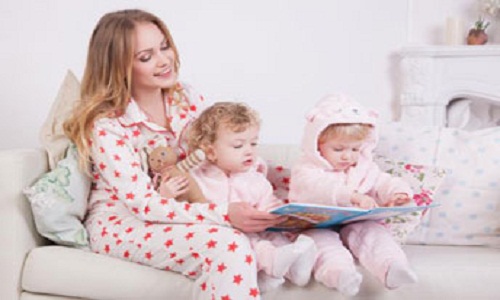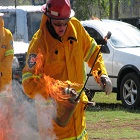"In the US, there are regulatory requirements for the flammability of textile. For example, children’s sleepwear – a high-risk category – has stringent flammability regulatory requirements in several countries including the US, Canada, Australia and the UK. The testing has been revealed by SGS, world’s leading inspection, verification, testing and certification company."
In the US, there are regulatory requirements for the flammability of textile. For example, children’s sleepwear – a high-risk category – has stringent flammability regulatory requirements in several countries including the US, Canada, Australia and the UK. The testing has been revealed by SGS, world’s leading inspection, verification, testing and certification company.
General apparels& flammability
In the US, general apparel needs to be tested for flammability using 16 CFR 1610 (Code of Federal Regulations). Some items, such as gloves and footwear, are exempt from the regulation. An additional group of items, which meet certain weight criteria or are made from specified fibre content, are considered to meet the flammability regulation without testing.

In the US flammability test, a standard flame (5/8 of an inch long) is lowered onto the six-inch fabric specimen which is mounted at a 45º angle, which approximates the position of fabric during wearing. The flammability of the fabric sample is evaluated by timing how long does it take the flame to travel the length of the test specimen. The faster the time, the more likely it is that the fabric will burn so rapidly that the garment could not be removed or the fire extinguished before grave injury happened. Testing takes place on both the original fabric and on the fabric after dry-cleaning and washing. The final classification uses the lowest time recorded at the two stages of testing.
Fabrics are classified into Class 1 Normal Flammability, Class 2 Intermediate Flammability and Class 3 Rapid and Intense Burning, according to the time of the burn and the characteristics of the burn. Fabrics, or fabrics cut from garments, with a Class 3 testing result are not allowed to be sold in the US market.
There are different requirements for plain surface and raised surface fabrics. If a plain surface fabric has a burn time of 3.5 seconds or more, it’s classified as Class 1. Fabrics with a burn time of less than 3.5 seconds are classified as Class 3 and fail the flammability test. Class 2 Intermediate Flammability does not apply to plain surface fabrics.
For raised surface fabrics, Class 1 fabrics have a burn time of more than 7 seconds. A combination of burn times between 4 and 7 seconds, and burning characteristics that indicate the base of the fabric has been burned through, would result in a fabric being rated as Class 2. Such fabrics, or garments made with Class 2 fabrics, are considered to have intermediate flammability and it is still legal for them to go on sale in the United States. A combination of a burn time less than 4 seconds, plus burning characteristics indicating the fabric’s base has been burned through, would result in a fabric being rated as a Class 3 fabric. It is illegal to sell Class 3 fabrics in the US.
Raised surface fabrics offer greater risk than plain surface fabrics because the pile on the fabric’s surface traps more air and oxygen is essential for sustained burning.
Children’s sleepwear & flammability
The US has two regulations for the flammability of children’s wearing apparel intended for sleeping or related activities: 16 CFR 1615 and 16 CFR 1616. All children’s sleepwear, sizes 0 to 14, must comply with one of these two standards, or else it cannot be sold in the US.
The children’s sleepwear flammability tests are more severe than the general wearing apparel flammability tests. The test is a vertical burning test in which a 1.5-inch flame is applied underneath the bottom edge of the fabric for 3 seconds. The evaluation is based on the length of material burned away or severely charred, which is called the ‘char length’.
Due to the severity of the tests, most children’s sleepwear made of cotton or other cellulosic materials will not comply with the standard. Fabrics made from 100% polyester or other synthetic fibers are usually self-extinguishing and therefore will usually pass the testing.
Passing testing results must be obtained for each fabric production unit (5,000 linear yards) both before and after 50 washes. Depending on results, it may not be necessary to complete 50 washes for all fabric production units. The tests must be applied to prototypes of each type of seam and trim to be used on the final garment and each garment production unit (500 dozen).
Most burn incidents occur when children are awake, unsupervised and wearing sleepwear. Contact with hot surfaces and small open flames are the primary hazards. Children’s sleepwear will comply with the flammability requirements if; it meets size specifications for sleepwear sizes 0 – 9 months and passes testing against 16 CFR 1610; it meets all tight-fitting criteria in the regulations and passes testing against 16 CFR 1610; the average char length of specimens tested is seven inches or less and; no individual specimen burns along its entire length (10 inches).
Sleepwear made in children’s sizes 0-9 months are exempt because most children wearing these sizes would not be unsupervised near open flames.
Tight-fitting sleepwear would not easily be exposed to an open flame due to its design. Such sleepwear must meet the specific sizing measurements given in 16 CFR 1615 and 1616. In addition to meeting the sizing specifications, the garments must be labelled as per regulations.













